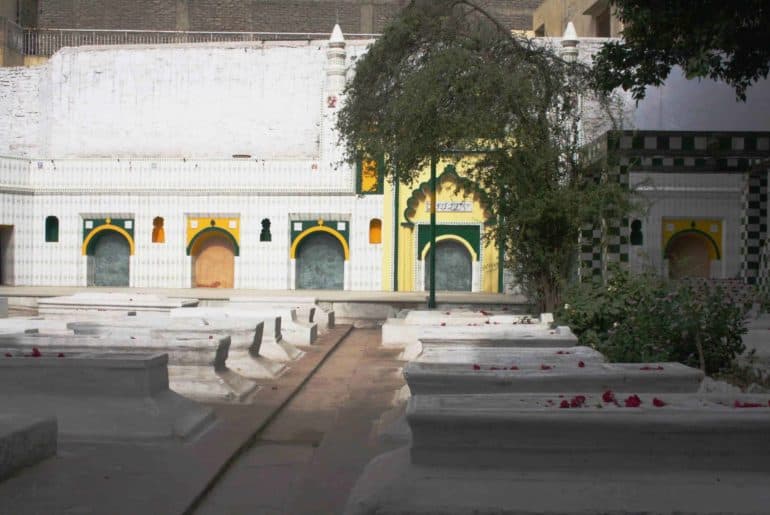There is an amusing profundity in desolation – something delicate and yet powerful, something that brings time to its greatest form of destruction.
In ‘Not Marble Nor the Gilded Monuments,’ Shakespeare muses on an all-empowering force of time and much more. It is truly awakening; the realisation of how time is most supreme. It is argued that material objects do not weather well against the tests of time. Indeed, it requires to be asked, what truly stands these tremulous tests? Art remains a symbol, a story, an emotion; something that is passed down to generations, the authenticity of which remains to an extent, even after decades of discourse. Tughlaqabad Fort is a place that is more a narrative. Even in its ruins, it speaks.
Built on a hillock in the southern portion of Delhi, surprisingly, the expansive fort was built in merely 4 years, from 1321-1325. The construction of the fort is the tale of classic karma. Ghazi Malik (later self-styled as Ghias-ud-din Tughlaq) was mocked for his suggestion to built a fort in southern parts of Delhi, by his predecessor, a Khalji king. Overthrowing the same king in 1321, Tughlaq Dynasty was established by Ghazi Malik. This fort was more of a declaration of Tughlaq’s overtaking the power. In all his glory, Ghazi Malik summoned all labourers in Delhi to work on his fort. Now, this incensed another labour-demanding saint, Nizamuddin Auliya because of the simple reason that the construction of his own baoli (well) had to be put on hold. Nizamuddin cursed the fort – Ya rahey ujjar, ya basey Gujjar – which translates to “either remain uninhabited or housing Gujjars.” Unsurprisingly, after the fall of the Sultanate, Gujjars of the area captured the Qila and till date Tughlaqabad Village is situated in it.

The perimeter of the entire complex including the palace and citadel would be more than 6 kilometres, enclosing an area of about 130 hectares – making it a sizable medieval city.
The moment you enter the place, a sudden vibe of ancient royalty envelopes you. The passage is hard stone and on both sides with greens and a lake choking with weeds and plants. The high stone walls and parapets are exuberant to witness. Almost everywhere you will witness eloquent architecture, now in ruins. The decapitated walls and crippled archways seem to talk of the ruinous nature of time. But the stone is hard nonetheless. Despite being a preserved historic site, it is somehow aching to see the desolation. Labourers are always working under the government’s scheme, but the area is too big to replicate the structures completely. Hence, some parts of the fortress have become inaccessible, overgrown with vegetation.

As for the resilient structures that remain true and standing, some will have you asking for more. One particular example of such a place is a secluded path, leading to an unimaginably surreal place – stone steps leading up to a huge arch. Entering this arch, you witness a green heaven. It is a huge forest of shrubs and trees here and there. Far across this forestry, the vision traces the primal evidences of civilisation that soon begins to develop into high rise buildings and busy roads. A seclusion inhabits this place, a beautiful peace.
Coming down to lower grounds, there is a well that has an immensely green tree that stands alone in the darkness. Going on and around, the topmost peak from the northern gate again takes you back to you a scintillating view of the life around this desolation, within and without.
Ghias-ud-Din Tughlaq’s Mausoleum is the highlight of this place. The actual mausoleum is made up of a single-domed square tomb (8 m x8 m) with sloping walls crowned by parapets. The edifice is topped by an elegant dome resting on an octagonal drum that is covered with white slabs of marble and slate. As beautiful as it is on the outside, the serene sadness of it hits you too. Under the dome, inside the mausoleum are three graves – The central one belongs to Ghiyath al-Din Tughlaq and the other two are believed to be those of his wife and his son and successor Muhammad bin Tughlaq.

As is with every other fortress of ignored historical importance, this fortress has its humanly imposed downsides. It is saddening to see how people have found their voices and expressions on the walls of Tughlaqabad Fort. But that is just the way we go about our historical architecture; it is felt that it must have the people’s impressions too.
But some might find these engravings worthy for the love that they symbolise. The locals around have the liberty to find breaches in the anyway languid security, so many places are filled with domestic and bovine wastes.
A little remote, but worth a visit, Tughlaqabad Fort is a place that will capture you with its ever-present calmness. A place for the unconventional adventurers, this fortress is a delight in desolation.
Image Credits: Kartik Chauhan for DU Beat.
Kartik Chauhan
[email protected]





